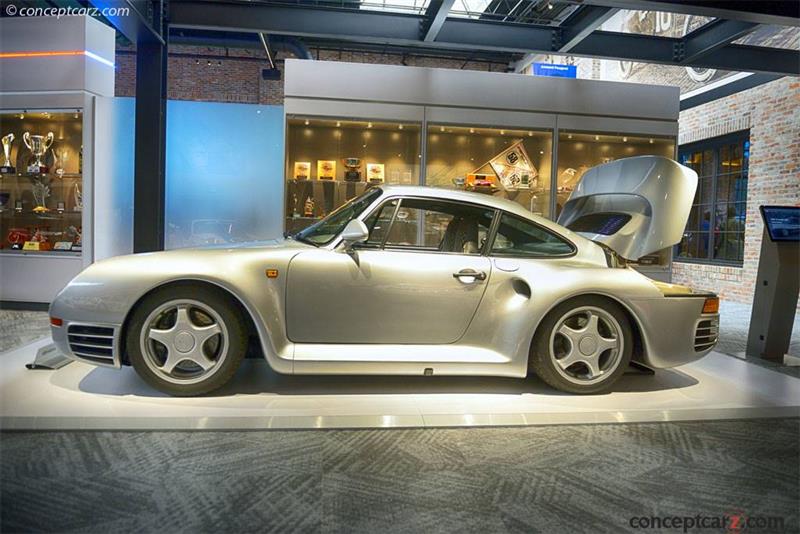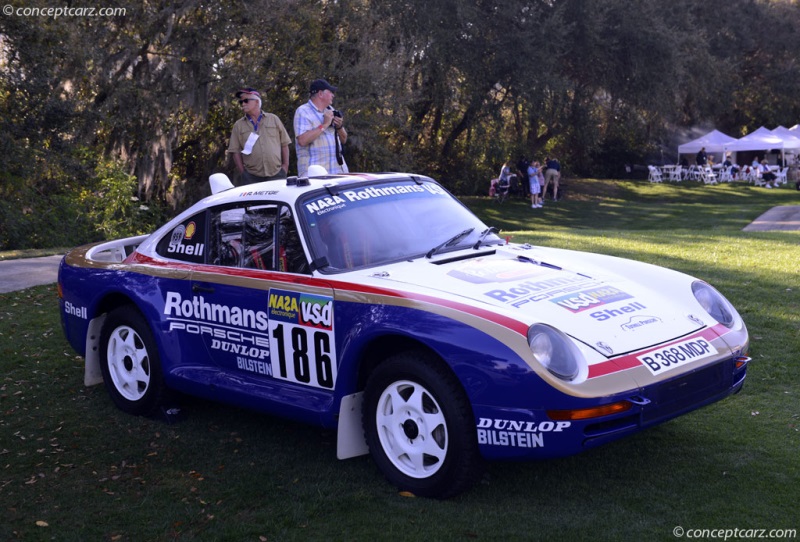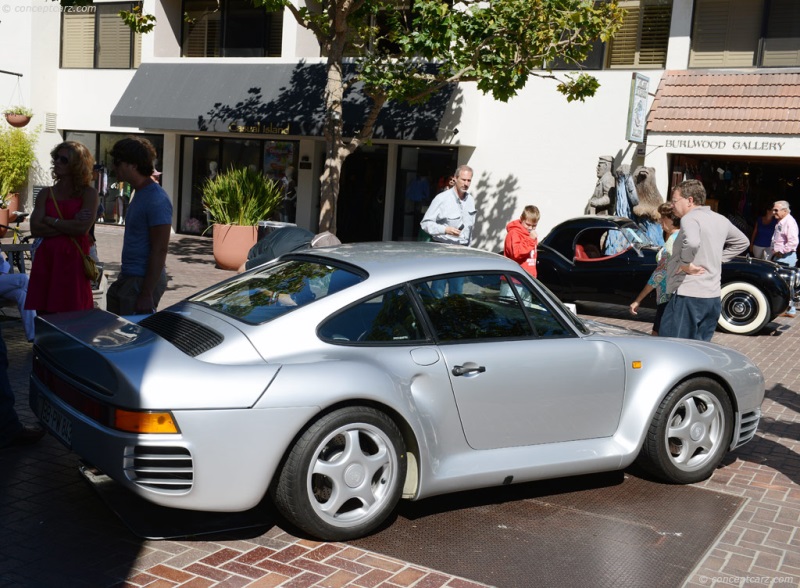Throughout Porsche's history, most of their racing efforts were done by supporting privateer customers. One of the exceptions was in the mid-1980s with the 959. It was originally conceived in a 1981 meeting between Porsche chief engineer Helmuth Bott and the recently hired president of the company, Peter Schutz. The idea was simple - to explore the ultimate capabilities of the 911. Schutz approved the idea through Group B competition. 
Coupe
Chassis #: WPOZZZ93ZFS010072
View info and history
Auction entries : 1Near the close of 1983, Porsche unveiled a concept car called the Gruppe B at the Frankfurt Motor Show. It was finished in all white and wore dramatically overhauled 911 styling. The twin-turbocharged flat-six engine was sourced from the company's shelved Formula 1 effort of 1980, the motor itself derived from the 935/78 Moby Dick powerplant. This engine would eventually be used in the production examples and later racing derivations of the 959.Group B homologation rules required 200 examples produced, so Porsche initially satisfied this requirement by building highly modified 911 SC models powered by a naturally aspirated 3.2-liter Carrera motor. Over the years that followed the Group B class evolved, causing Porsche to reconsider its ability to provide the testing ground needed for the 959. Porsche driver Jacky Ickx had previously raced a Mercedes-Benz 280 GE Gelandewagen in the Paris-Dakar Rally and expressed his interest in competing in the event again, this time in a Porsche. The Paris-Dakar Rally was a grueling 7,500 mile that tested man and machine - the perfect arena for Porsche to experiment and test new technology and designs. For the 1984 Paris-Dakar Rally, the Rothman team fielded three Porsche cars with one driven by Ickx, internally classified as the Type 953. Although they wore standard 911 bodywork, they were heavily modified and used many advanced features, such as manually controlled four-wheel drive. The doors and deck lids were built from aluminum, and Plexiglas replaced the standard glass. The Porsche driven by René Metge and Dominique Lemoyne finished first overall, while Ickx and Claude Brasseur finished 6th. The third car finished in 17th place. 
Coupe
Chassis #: WP0ZZZ93ZFS010015
Engine #: 6380621
View info and history
Auction entries : 1For the following year's event, Porsche brought three purpose-built 959 examples with new chassis and coachwork in the style of the Gruppe B concept. Power continued to be the naturally aspirated Carrera engine, but now featured many computer-governed systems and a highly developed all-wheel-drive system. Despite the technological prowess, all three cars retired due to mechanical issues. Ickx and Brasseur were in the overall lead before hitting a large rock and retiring. The car of Mass and Kiefer finished after an early accident, and the third car had an oil line failure about halfway through the race.At the 1986 Paris-Dakar race, Schutz and Bott went 'all in' with the 959 powered by a turbocharged engine. The gamble paid off with a 1-2 finish and the third car finishing in 6th place. The ultimate all-wheel-drive Porsche had been fully vetted, prepared, and tested. Soon it would join the elite road-going group of cars known as supercars.During the development of the 959 production car, Porsche built twelve 'F-Series' prototypes, followed by the 'V-Series' pre-production cars and 'N-Series' pilot vehicles. A total of 29 of these chassis were assigned certain letter codes and numbers and used for various purposes, such as crash tests, road tests, and media coverage. Each of the cars was extensively tested by Porsche engineers to ensure that the systems would be ready for full production. 
Coupe
Chassis #: 10066
View info and historyThe production versions were introduced at Frankfurt in 1985 and the company planned to build approximately 200 Komfort units in compliance with the FIA's Group B Homologation rules. They were offered to select enthusiasts who were willing and pay to pay the exorbitant price. Beginning with the galvanized-steel 911 body shell, the Type 959 received alloy doors and bonnet. Kevlar-reinforced plastics were used for the front and rear wings, rear valance, rocker panels, engine cover, and roof. The front valance was made of flexible polyurethane. The windscreens were mounted flush to improve aerodynamics. The 2.8-liter six-cylinder, dual overhead cam, boxer engine had four valves per cylinder and dry-sump lubrication. The rear-mounted, racing-derived unit was both air- and water-cooled. Two turbochargers operated sequentially. The turbo on the right-hand cylinder bank was an exhaust-driven blower that provided a 'mild' boost to 4,200 rpm, helping to eliminate 'turbo lag.' After this point, the left-side turbo was engaged, boosting power to 450 bhp at 6,000 RPM. The engine was backed by a six-speed manual transmission that was controlled with a single-plate PSK (Porsche Steuer Kupplung, or Porsche Command Clutch). The power was then transmitted to a computer-controlled all-wheel-drive system that automatically shifted torque between the rear and front differentials based on demand. Based on road conditions, the torque produced by the engine could be divided from 50-50 to 20-80 front-to-rear. The system could also be adjusted manually or automatically.The Porsche 959 could go from zero-to-sixty mph in 3.7 seconds and had a top speed of 317 km/h. The incredible power produced by the race-bred engine and AWD system proved too much for the ordinary tires, so Porsche tasked Dunlop to design a new magnesium-alloy road wheel with run-flat tires. These new tires were wrapped around special 17-inch Denloc wheels that had hollow spokes. The anti-lock braking system was controlled by high-speed microprocessors and the suspension had three adjustable ride-height settings. 
Coupe
Chassis #: WP0ZZZ93ZFS010015
Engine #: 6380621
View info and history
Auction entries : 1Among the many 'first' claimed by the 959 was the use of the traction-controls system - the first use in a production car. It was also the first production car to use a tire pressure monitor system. Porsche offered a small selection of options including fog lights, an alarm system, fire extinguisher, three-spoke steering wheel, a roll cage, a mirror on the right-hand side, a racing harness, and electrically heated and adjustable seats (with or without stripes).A total of 283 examples were built with each having a base price of $300,000. The waiting list was long and Porsche lost money on every example, earning it the nickname of 'Porsche's Gift to its Favorite Customers.' The United States customers were not legally able to import the cars, leading to the 'grey market' for 959s. The 'Show and Display' law of 1999, championed by 959 owners Bill Gates and Paul Allen, finally allowed the cars to be legally imported.
by Daniel Vaughan | May 2020
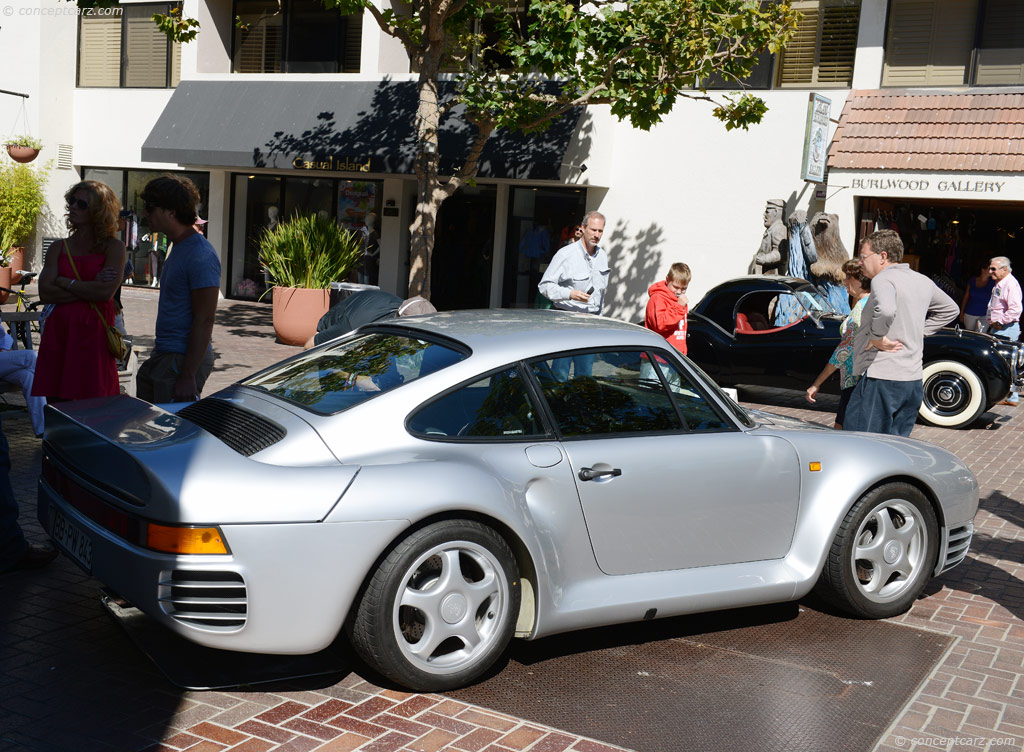
Coupe
Chassis #: WPOZZZ93ZFS010072
View info and history
Auction entries : 1
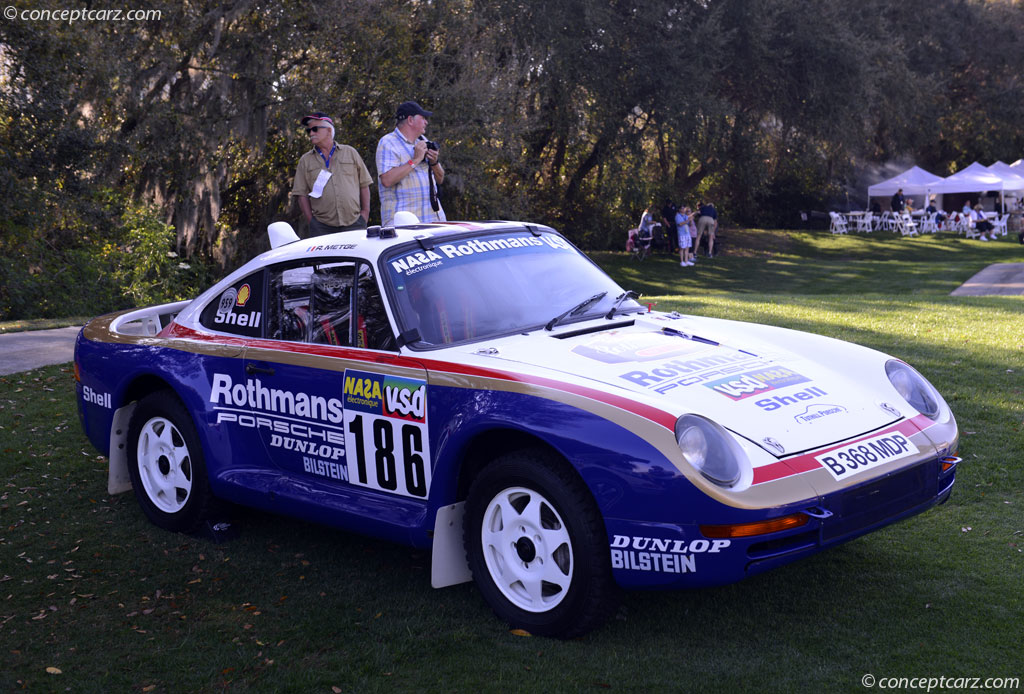
Coupe
Chassis #: WP0ZZZ93ZFS010015
Engine #: 6380621
View info and history
Auction entries : 1
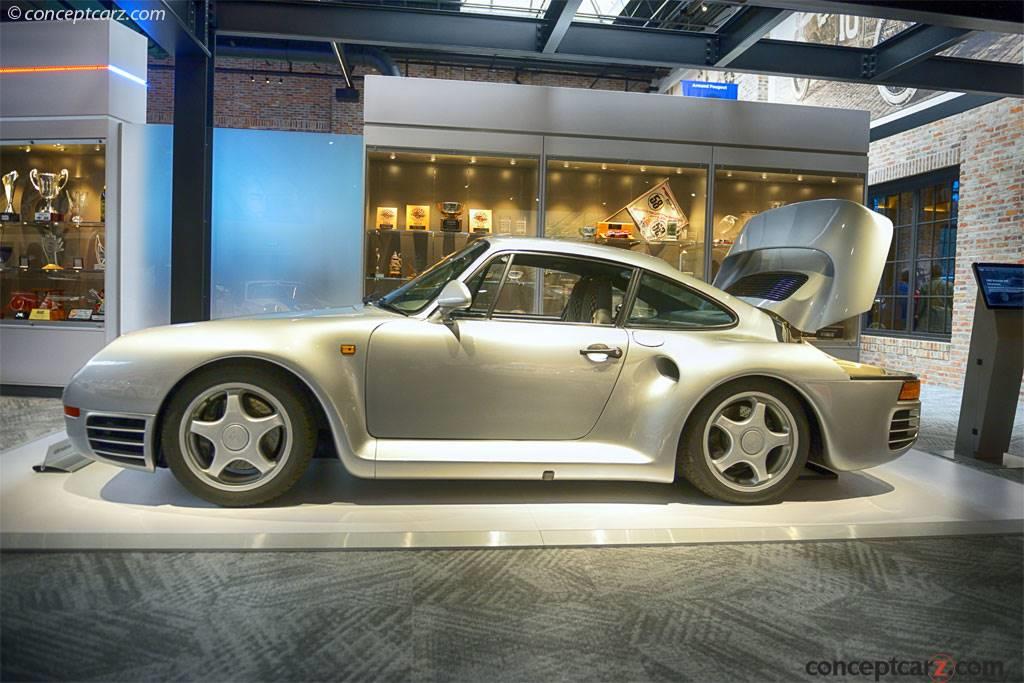
Coupe
Chassis #: 10066
View info and history
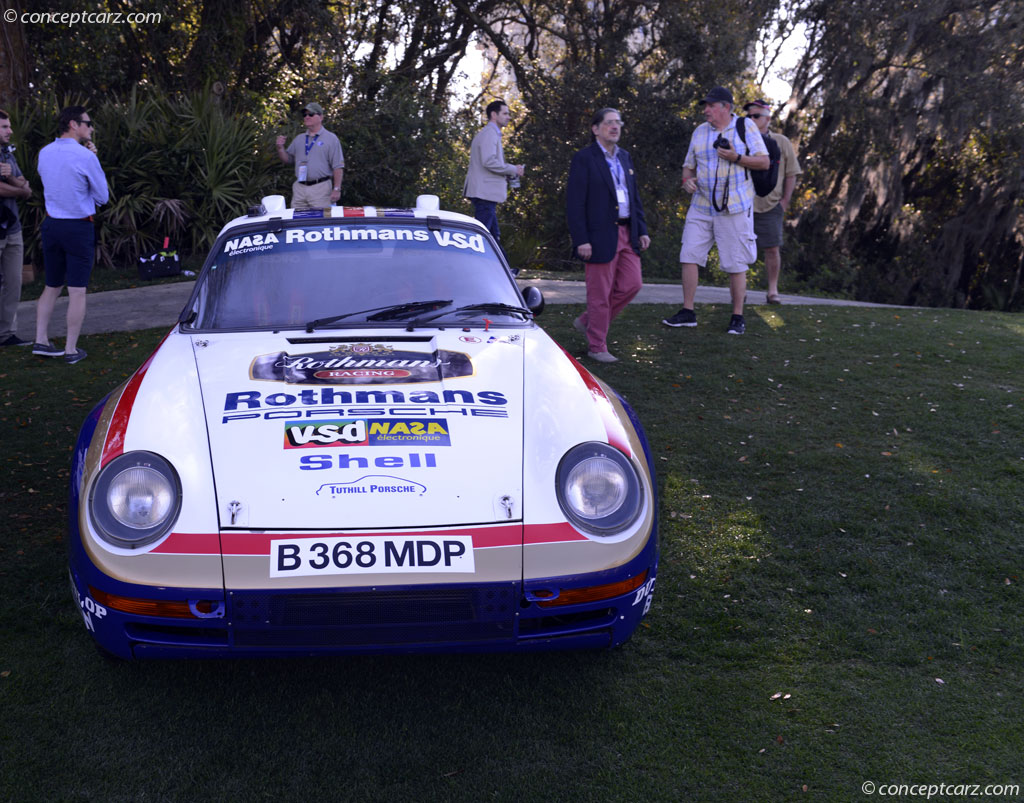
Coupe
Chassis #: WP0ZZZ93ZFS010015
Engine #: 6380621
View info and history
Auction entries : 1
by Daniel Vaughan | May 2020
Related Reading : Porsche Type 959 History
In 1981, the development of the 959 began. Helmut Bott, the head engineer at Porsche, wanted to create a sports car based on the 911 that would take their product to the next level in performance, technology, and design. He began by collaborating with Peter Schutz, the Managing Director at Porsche, about his ideas. The ideas proposed were to continue with the rear engine configuration, examine the....
Continue Reading >>
Continue Reading >>
Similar Automakers
1985 Porsche 959 Vehicle Profiles
Recent Vehicle Additions
Performance and Specification Comparison
Type 959 Specification Comparison by Year
Year
Production
Wheelbase
Engine
Prices
Related Automotive News

Singer presents results of Turbo Study for owners of the 964 Cabriolet
First Porsche 911 reimagined by Singer with a fully opening roof
Underlines wide range of capability enabled by Singers Turbo Study in collaboration with owners of the Type 964 air-cooled 911
Luxury grand touring or sports-focused character, tai...

Porsche 911 Speedster Concept Fascinates U.S. Audience
North American premiere at Rennsport Reunion VI in California
Atlanta, Georgia. The Porsche 911 Speedster Concept received an enthusiastic welcome at its third public appearance. Following its world premiere on June 8 in Stuttgart-Zuffenhausen,...

First 959 Paris-Dakar Ever Offered for Public Sale set for RM Sotheby's Porsche 70th Anniversary Auction
RALLY CAR OFFERED ALONGSIDE 959 PROTOTYPE
RM Sothebys brings one of very few 959 Paris-Dakar specials in private hands to its auction on the occasion of this years Porsche 70th Anniversary
959 contested the grueling 1985 Paris-Dakar at...

VOLKSWAGEN CELEBRATES 40 YEARS OF THE GOLF AT THE NEW YORK AUTO SHOW
The most successful European car of all time turns 40
More than 30 million Golf models have been sold worldwide
Car went on sale in Europe in May 1974, was sold in the U.S. from December that year as the Rabbit
Seventh-generation Golf GTI goes on...

Land Rover Celebrates 65 Years Of Technology And Innovation
SIXTY-FIVE YEARS OF LAND ROVER
From our earliest days, the desire to create a vehicle that will tackle any terrain has made Land Rover famous around the world. Over the past 65 years, the Land Rover family has grown into the highly respected...




















